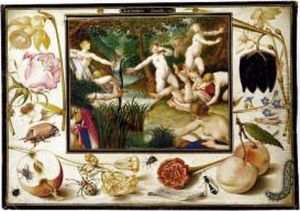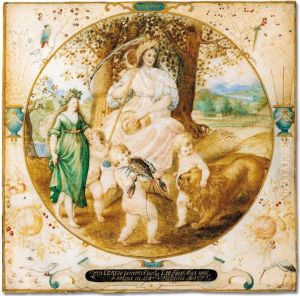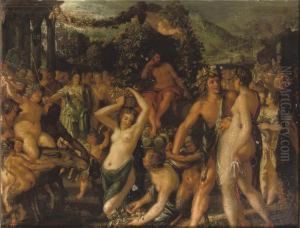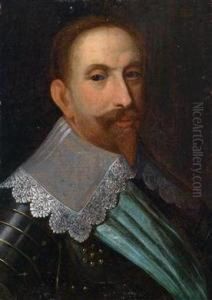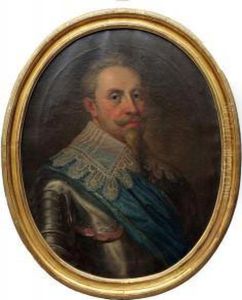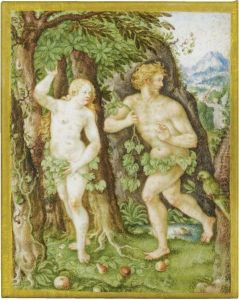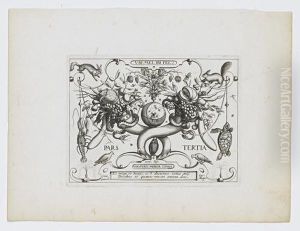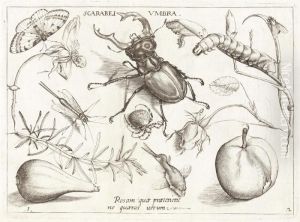Jakob Hoefnagel Paintings
Jakob Hoefnagel, born in 1575 in Antwerp, was a notable figure in the late 16th and early 17th centuries, making significant contributions to the fields of engraving, miniature painting, and the illustration of natural history. He was a part of the Hoefnagel family, a prominent artistic dynasty, with his father, Joris Hoefnagel, being a well-regarded miniaturist, manuscript illuminator, and a pioneer in the genre of still life and nature depiction. This familial background provided Jakob with a fertile ground for developing his artistic talents and interests, particularly in the intricate detailing of flora and fauna, which would become a hallmark of his work.
Jakob's career is marked by his extensive travels throughout Europe, which were not only a consequence of the turbulent political and religious landscape of the time but also an opportunity for him to study and document the natural world and different societies. His journeys took him to the court of Rudolf II in Prague, a major center for arts and sciences during the Renaissance, where his father Joris had also worked. The Prague court was known for its collection of artworks and curiosities, and it was here that Jakob likely honed his skills and expanded his interests under the influence of other artists and scholars.
Hoefnagel's work is characterized by its meticulous detail and his fascination with nature, which he depicted with a scientific eye yet imbued with artistic flair. He contributed to several important works during his lifetime, including the illustration of manuscripts and the production of engravings that were used in scientific publications. His illustrations often served as some of the earliest examples of scientific illustration, aiming not only to please the eye but also to contribute to the body of knowledge in the natural sciences.
Despite the shadow cast by his father's significant legacy, Jakob Hoefnagel managed to carve out his own niche, particularly in the realm of engraving and miniature painting. His legacy is not just limited to his contributions to art and science but also includes his role in the broader cultural and intellectual currents of his time, bridging the gap between the Renaissance and the burgeoning scientific revolution. Jakob Hoefnagel's death in 1630 marked the end of a life dedicated to the pursuit of knowledge and beauty, leaving behind a body of work that continues to be appreciated for its detail, precision, and aesthetic appeal.
